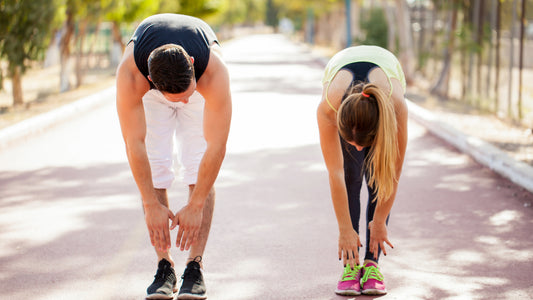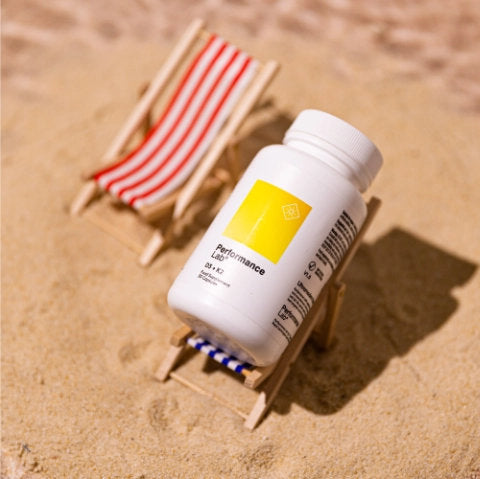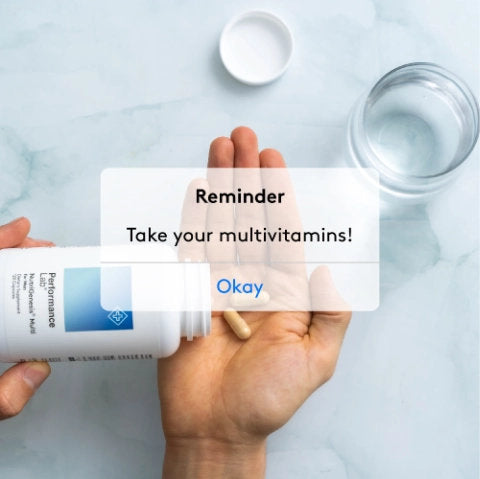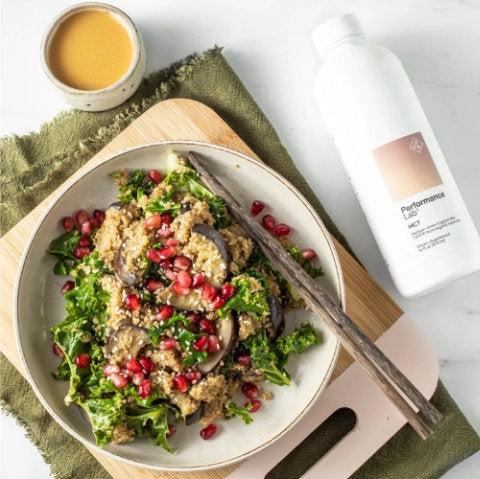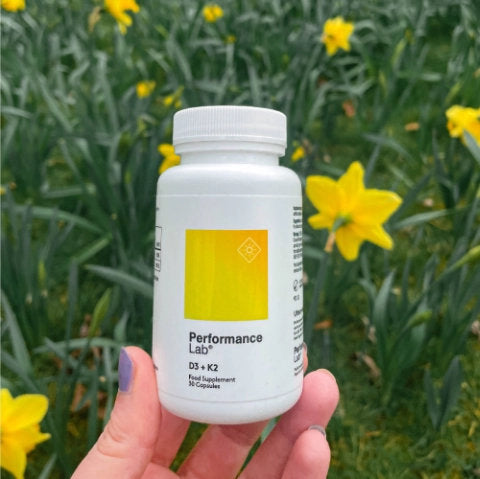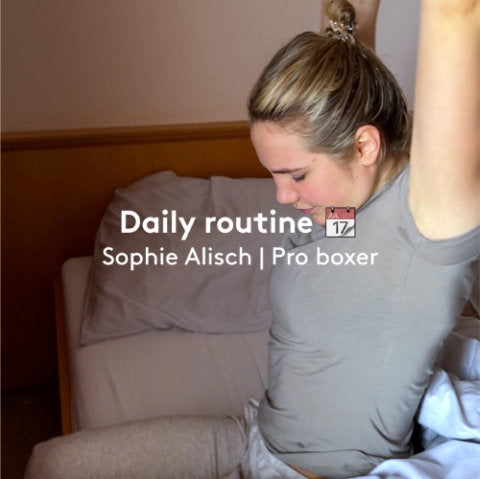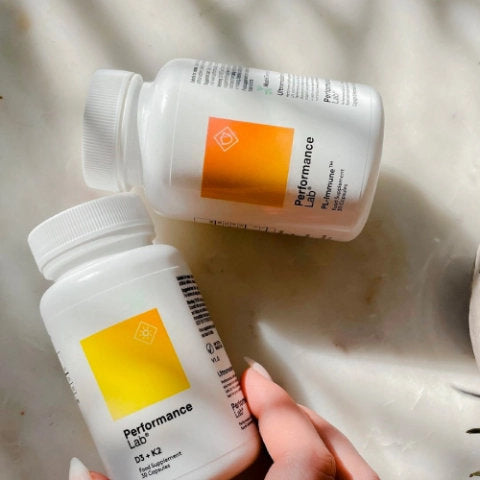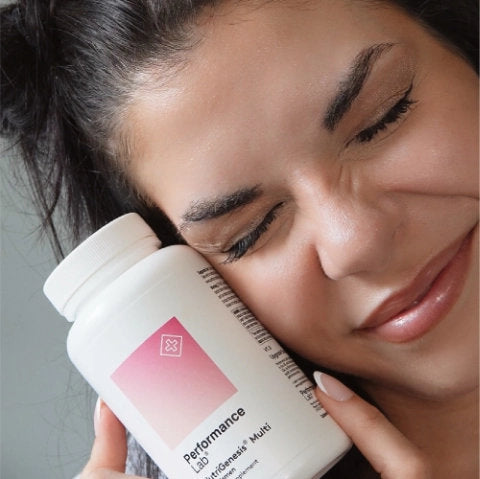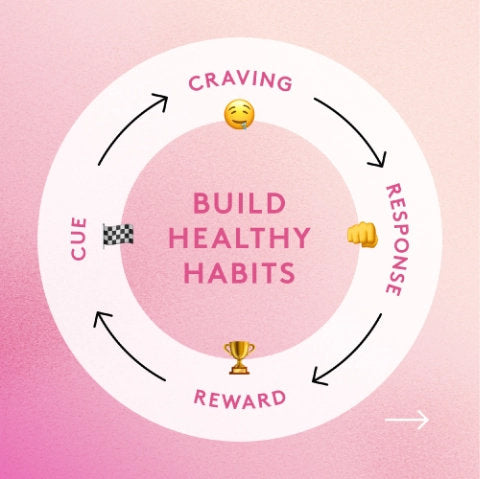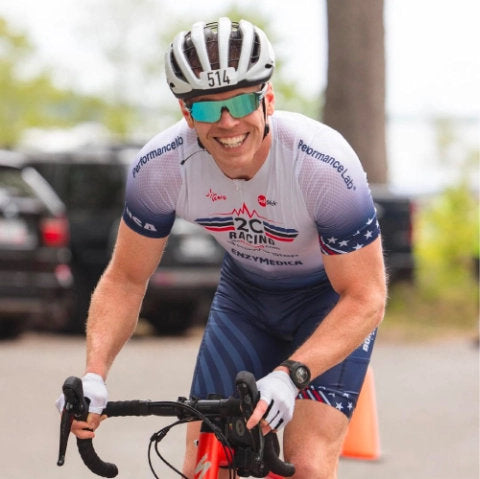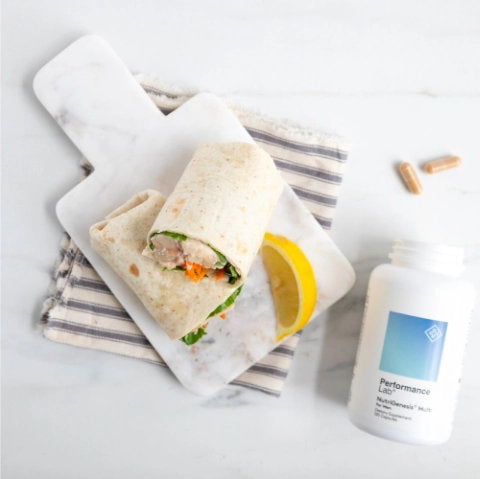Whoever said “humans are creatures of comfort” obviously had never met a runner. Of all the categories of recreational athletes, runners are perhaps the strangest for their exceptionally uncomfortable lifestyle.
And increasingly so, considering all the options of comfort increasingly available to us.
After all, given the choice between spending the day on the couch eating and watching TV versus running long-distances until your lungs are about to pop out of your chest and your beat-up feet start throbbing, wouldn’t everyone choose the former over the latter?
Not runners.
Because runners know that if you commit yourself long enough to an active running schedule, the act of running actually gets easier and easier.
In fact, it becomes the sitting around that’s actually unbearable—especially when there’s still so much ground to cover and so many podcasts to listen to!
But, even so, even the most fit and devout runners eventually experience running-related discomforts that may become so unbearable to the point that running or exercising is nearly intolerable.
One of the most common painful conditions that afflict runners: knee pain—otherwise known as “runner’s knee.”
In this article, we cover the underlying mechanics of runner’s knee, and other running-related joint conditions, as well as an in-depth breakdown of the best joint supplement for runners: Performance Lab® Flex.
Starting with the most pressing question:
Why Do My Knees Hurt After Running? Common Causes Explained
Despite the initial discomfort, running does feel good.
Running, more so than weightlifting, relieves stress and even has somewhat of a neuroprotective cognitive enhancing effect.
Want to get high? Running can do that, too! Thanks to the euphoric “runner’s high” feeling associated with aerobic exercise.
At the least, running burns calories, which makes consuming calories much more guilt-free.
Yet, while some soreness is to be expected with running (as with any exercise), running can eventually lead to knee pain, especially if you fail to take care of the following:
- Form and Posture: running with habitually poor form can throw of your kinesiology, resulting in excess stress load on your joints, including your knees and hips.
- Weight: running is a great way to lose weight; yet running with excess weight may place excess pressure on your lower extremities.
- Location: running on hard surfaces may amplify the total stress on your musculoskeletal system, as opposed to running on soft surfaces like grass and dirt trails.
- Shoe Quality: eventually your favorite running shoes’ soles deteriorate, especially in the heel region, resulting in uneven weight distribution.
- Strength: aerobic exercise, like running, is great for your cardio health; however, some strength-training may help mitigate your risk of muscular atrophy and injury.
- Stretching: like cats and dogs, our initial instinct upon waking should be to stretch, which helps open circulation and maintain a good kinesthetic flow.
- Nutrition: a healthy diet and an effective, natural joint support supplement provide the essential required nutrients for optimal joint integrity.
It isn’t hard to distinguish “good” pain (i.e., general soreness) from “bad” pain, both during and after exercise.
If the mere act of walking up and down stairs, or standing up from a chair, involves a shooting pain from your knees, that’s “bad” pain.
That’s erring on the side of “injury” pain.
It may be useful to know the different types of running-related knee injuries to better understand how and why your knees are hurting after running.
4 Common Running-Related Knee Injuries
“My knee hurts” points to the general area of pain, but it doesn’t precisely indicate the exact nature of the knee pain.
Not all knee pain is equal.
Four of the most common running-related knee injuries include:
#1) Patellar Tendinitis
Also called “jumper’s knee,” patellar tendinitis is an injury of the tissue (patellar tendon) connecting the kneecap to the shin bone. Connected to the quadriceps, the patellar tendon facilitates extension of the knee.
Though typically associated with “jumping sports,” such as basketball and volleyball, patellar tendinitis may also occur with other sports, such as quad-heavy strength-training and downhill running.
Patellar tendinitis hurts most while kneeling, squatting, and running downhill. As the pain persists, eventually tears may occur within the tendon, causing painful inflammation and weakening the tendon.
What to do: Stretching tight leg muscles and strengthening your hamstrings may help improve patellar tendinitis pain. A knee strap and daily icing may also help.
#2) Iliotibial (IT) Band Syndrome
Iliotibial (IT) band syndrome feels more like “leg pain” than “knee pain,” as it involves a group of connective tissues ranging from the tibial portion of the knee to the ilium formation of the pelvis.
If you’re unsure what the IT band is, have a friend punch the side of your leg and you’ll soon understand the meaning of both “IT band” and “IT band syndrome.”
Under normal circumstances, IT band syndrome occurs when excessive irritation causes the IT band to tighten up, resulting in a pronounced pain on the outside of the knee.
It most commonly occurs with long-distance runners, especially for those new to running.
What to do: foam roll your IT band (the side of your thigh) daily, stretch, strengthen your glutes and core muscles, and buy new shoes, if you’re running with old ones.
#3) Runner’s Knee
If you’re a runner and your knees hurt, it’s said that you have runner’s knee. However, the specific condition of runner’s knee refers to general cartilage damage under the kneecap.
Often, runner’s knee accompanies other painful knee conditions, such as patellar tendinitis and IT band syndrome.
Needless to say, runner’s knee affects more than just runners, as any overuse of the knees may contribute to painful inflammation of cartilage.
Either way, “runner’s knee” pain worsens when walking up and down stairs, while kneeling and squatting, or sitting cross-legged.
What to do: temporarily reduce your running distance, cross-train with other activities that are easy on the knees, ice daily, and improve your diet.
#4) Osteoarthritis (OA)
The most common form of arthritis, osteoarthritis (OA) occurs when the cartilage cushioning the inside of your knee joint wears down.
As we age, cartilage naturally degrades. However, erosion of cartilage may also occur with overtraining and poor nutrition, as well as under conditions of muscle atrophy.
While running doesn’t increase one’s risk of OA (quite the opposite, in fact), poor running posture or excessive exercise to the point of muscle wasting may contribute to OA, resulting in painful bone-on-bone friction that makes running increasingly difficult.
What to do: compared to the other knee pain conditions on this list, OA is the most difficult to manage. Instead, it’s best to take care of your joints before OA develops by practicing healthy running habits, strength-training to mitigate muscle wasting, and supplementing a natural joint support supplement.
Can a Joint Support Supplement Help?
Yes, depending on the joint supplement and the severity of the joint pain. Many ingredients used by joint supplements, such as glucosamine and chondroitin, are viewed more so as “good nutrition” for joint health as opposed to “performance enhancing” ingredients.
All the same, an effective joint support stack that supplies glucosamine, turmeric, chondroitin, and other natural, effective joint-supportive ingredients may significantly improve joint flexibility and fitness while protecting against future aches and pains.
With that in mind, to get the most out of a joint support supplement, it’s best not to wait until joint pain manifests to start taking one.
Benefits of Joint Supplement for Post-Exercise Knee Pain
A healthy degree of running and exercise may help modulate the body’s immune response against excess inflammation and oxidative stress.
However, excess inflammation and oxidative stress may still occur with high-intensity exercise, especially daily high-intensity exercise.
Taking an effective joint supplement may help improve post-exercise knee pain by:
- Reducing joint-damaging inflammation
- Combatting free radicals (oxidative stress)
- Regulating cartilage-diminishing enzymes
- Providing raw “building block” material for cartilage repair
- Bolstering connective tissue integrity and synovial fluid production
And more. Compared to most over-the-counter pain relievers, such as ibuprofen, natural joint support supplements do more than just provide pain relief. They soothe joint discomfort while boosting joint resilience against further joint discomfort and injury.
Our Joint Supplement for Knee Pain After Running: Performance Lab® Flex

With Performance Lab® Flex, ibuprofen no longer has to be the runner’s go-to option for pain relief.
By combining all the best, natural joint-soothing botanicals and compounds in a comprehensive, ultramodern formula, Performance Lab® Flex achieves the soothing effects of traditional OTC pain relievers without the lingering side effects or stomach upset.
As any runner knows, inflammation can seriously disrupt one’s exercise momentum and performance.
Stiffness and soreness, tenderness and swollen pain—while OTC pain relievers may offer fast-acting relief, they fail to target the underlying biomechanisms of joint pain.
By targeting the underlying oxidative and inflammatory mechanisms of joint pain and stiffness with all-natural ingredients, Performance Lab® Flex offers greater relief in the long run while also providing significant protection against future aches and pains.
Get the Best Deal on Performance Lab® Flex Here
Key Features
- CurcuWIN® Turmeric, 250mg
- AprèsFlex® Boswellia Serrata, 100mg
- Glucosamine Sulfate 2KCL, 500mg
- Phytodroitin™ (mucopolysaccharide extract), 100mg
- OptiMSM® Methylsulfonylmethane, 100mg
Formulated against-the-grain of the low-quality standards of your typical joint support supplement, Performance Lab® Flex mixes only 100% clean, natural, and potent joint-supportive ingredients, without using any risky shellfish-sourced ingredients or synthetics.
Flex’s formula divides into two categories:
1) Soothing Botanicals for Natural Joint Comfort: with turmeric, as CurcuWIN®, and Boswellia serrata extract, as AprèsFlex®, Performance Lab® Flex provides two legendary herbs used for centuries for health and performance enhancement, albeit with advanced bioavailability for greater joint soothing comfort and protection.
2) Maintenance Support for Healthy Joint Structure: glucosamine, chondroitin, and MSM—a smart combination of “building block” nutrients and a bone-strengthening mineral for a multi-pathway, micro-target approach to elevating joint strength, repair, and regeneration.
What’s more, all Flex ingredients are eco-friendly and vegan-friendly, which is unique to a supplement genre ripe with risky shellfish-sourced ingredients and other animal byproducts.
And maximizing the quality and cleanliness of Flex’s formula are Flex’s synthetic-free NutriCaps®, a premium, patented, prebiotic-infused capsule constructed out of fermented tapioca (pullulan).
Altogether, these parts synergize for a number of joint health benefits in support of greater running comfort and exercise recovery.
Get the Best Deal on Performance Lab® Flex Here
Key Benefits
Performance Lab® Flex’s all-natural formula targets multiple joint fitness and flexibility pathways, most notably:
- Comfort – Flex soothes excess joint stiffness and tenderness
- Protection – Flex combats oxidative stress and harmful enzymes
- Lubrication – Flex supports the production of clean synovial fluid
- Bone Strength – Flex bolsters bone mineral density in the joint
- Shock Absorption – Flex hydrates cartilage to keep it thick and springy
- Joint Resilience – Flex nourishes connective tissue for limber function
In the joint, flexibility and stability work in opposition. The greater the joint flexibility, the lower the stability and the greater the injury risk.
Likewise, the greater the joint stability, the lower the joint flexibility and (again) the greater the injury risk.
By both strengthening joint connective tissues and optimizing smooth, well-lubricated movement, Performance Lab® Flex helps maintain a balance between flexible joint movement and a sturdy, stable structure for all-around improved performance and protection.
Whether you’re a runner or not, young or old, Performance Lab® Flex’s all-natural, plant-based joint support stack can help you stay flexible and limber, boosting your daily life quality with minimal risk of adverse side effects.
Only clean, green, powerful joint support here!
Final Word on Knee Pain and Injuries After Running
Soreness after exercise, whether lifting or running, is to be expected. Granted, exercise is also an effective strategy to reduce general soreness and pain in the long-term, especially considering the well-documented link between arthritis and a sedentary lifestyle, but even so: a highly active lifestyle has its risks and knee pain is certainly a common one.
For those who experience knee pain after running, yet who also don’t want to take too much time off running, Performance Lab® Flex offers daily joint pain relief and protection.
- Designed for highly active athletes and exercisers, Performance Lab® Flex assists with virtually all activity-related joint pain and stiffness, offering a healthier strategy to soothe achy joints without risking any adverse side effects.
With an all-natural, plant-based formula encapsulated in all-natural, prebiotic-infused NutriCaps® capsules, Performance Lab® Flex is safe and effective for mitigating knee pain both during and after running.
References
- Gomez-Pinilla F, Hillman C. The Influence of Exercise on Cognitive Abilities. Compr Physiol. 2013 Jan; 3(1): 403-428.
- Boecker H et al. The runner’s high: opioidergic mechanisms in the human brain. Cereb Cortex. 2008 Nov; 18(11): 2523-31.
- Hamill J, Gruber AH. Is changing footstrike pattern beneficial to runners? J Sport Health Sci. 2017 Jun; 6(2): 146-153.
- Riddle DL, Stratford PW. Body weight changes and corresponding changes in pain and function in persons with symptomatic knee osteoarthritis. A cohort study. Arthritis Care Res (Hoboken). 2013 Jan; 65(1): 15-22.
- Tessutti V et al. Attenuation of foot pressure during running on four different surfaces: asphalt, concrete, rubber, and natural grass. J Sports Sci. 2012; 30(14): 1545-50.
- Shakoor N et al. The Effects of Common Footwear on Joint Loading in Osteoarthritis of the Knee. Arthritis Care Res (Hoboken). 2010 Jul; 62(7): 917-923.
- Shorter E et al. Skeletal Muscle Wasting and Its Relationship With Osteoarthritis: a Mini-Review of Mechanisms and Current Interventions. Curr Rheumatol Rep. 2019; 21(8): 40.
- Choi JH et al. The effects of taping, stretching, and joint exercise on hip joint flexibility and range of motion. J Phys Ther Sci. 2016 May; 28(5): 1665-1668.
- Thomas S et al. What is the evidence for a role for diet and nutrition in osteoarthritis? Rheumatology (Oxford). 2018 May; 57(Suppl 4): iv61-iv74.
- Rosso F et al. Patellar tendon: From tendinopathy to rupture. Asia Pac J Sports Med Arthrosc Rehabil Technol. 2015 Oct; 2(4): 99-107.
- Beals C, Flanigan D. A Review of Treatments for Iliotibial Band Syndrome in the Athletic Population. J Sports Med (Hindawi Publ Corp). 2013; 2013: 367169.
- Mora JC et al. Knee osteoarthritis: pathophysiology and current treatment modalities. J Pain Res. 2018; 11: 2189-2196.



